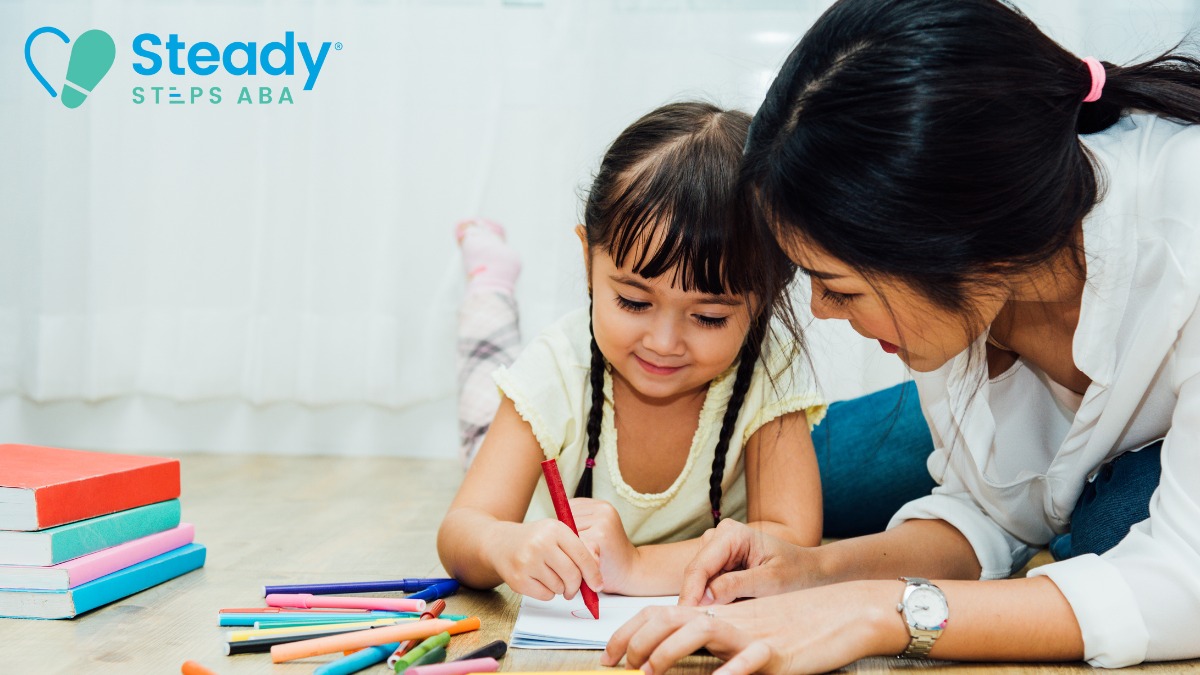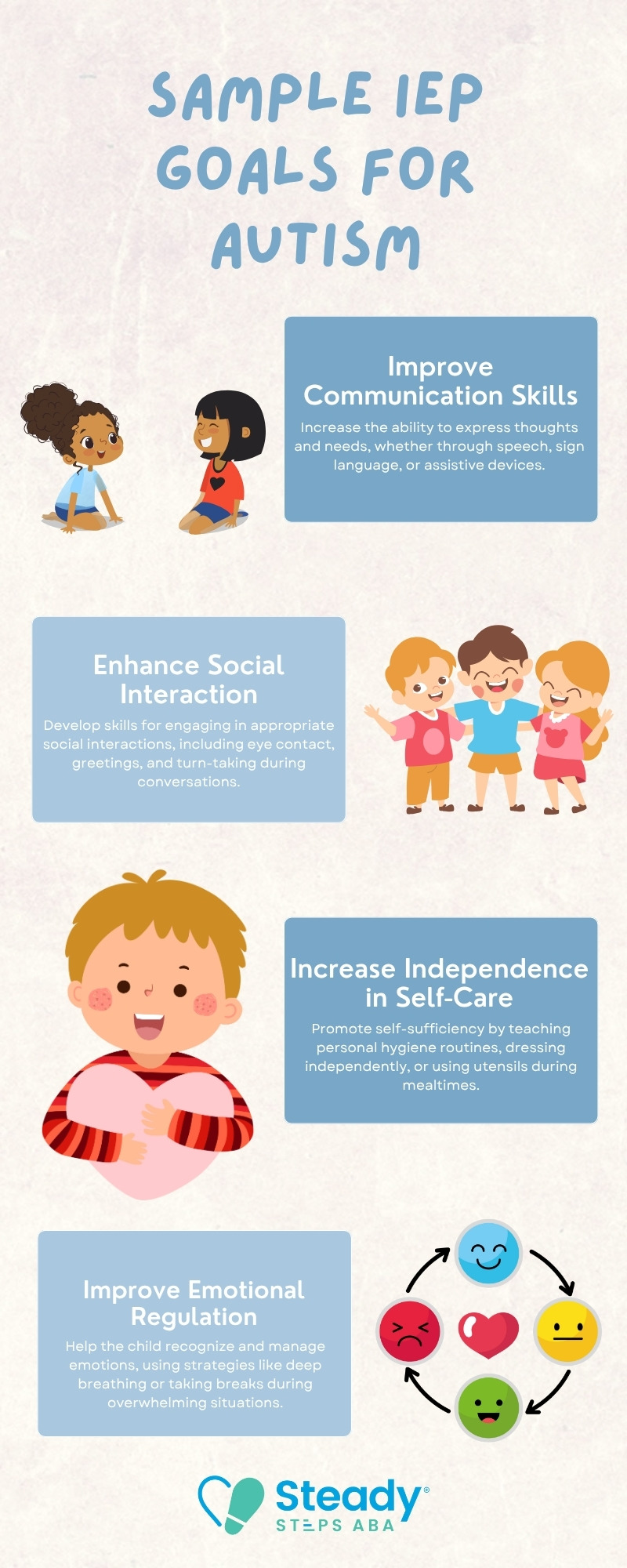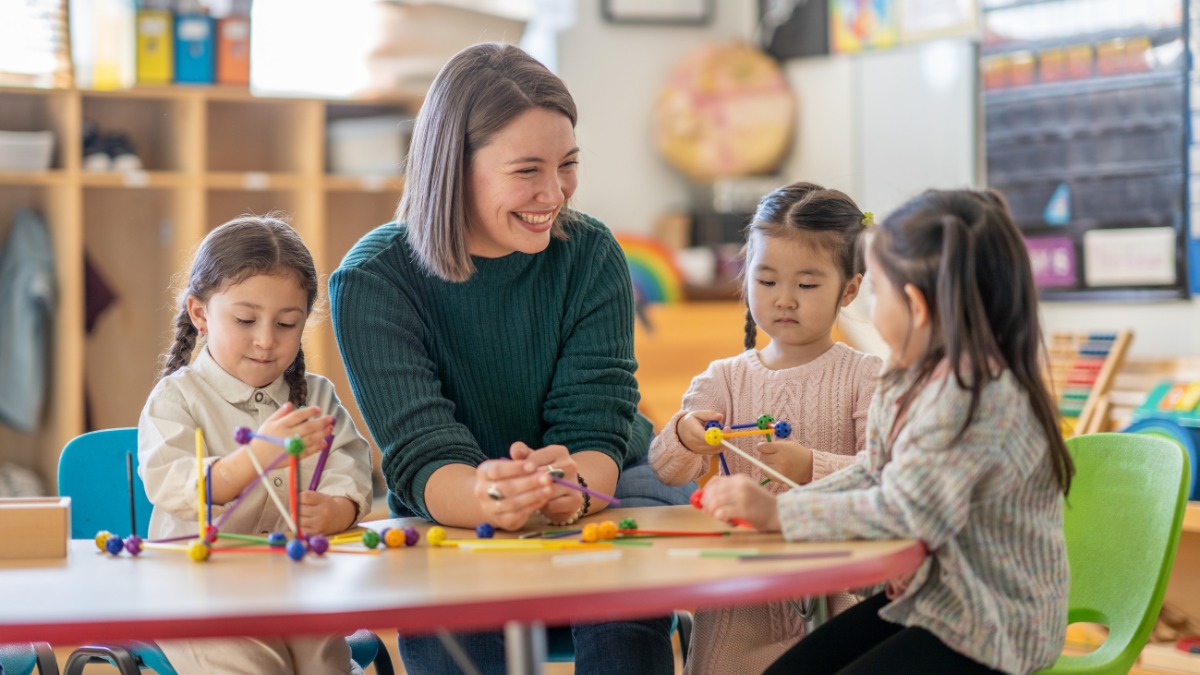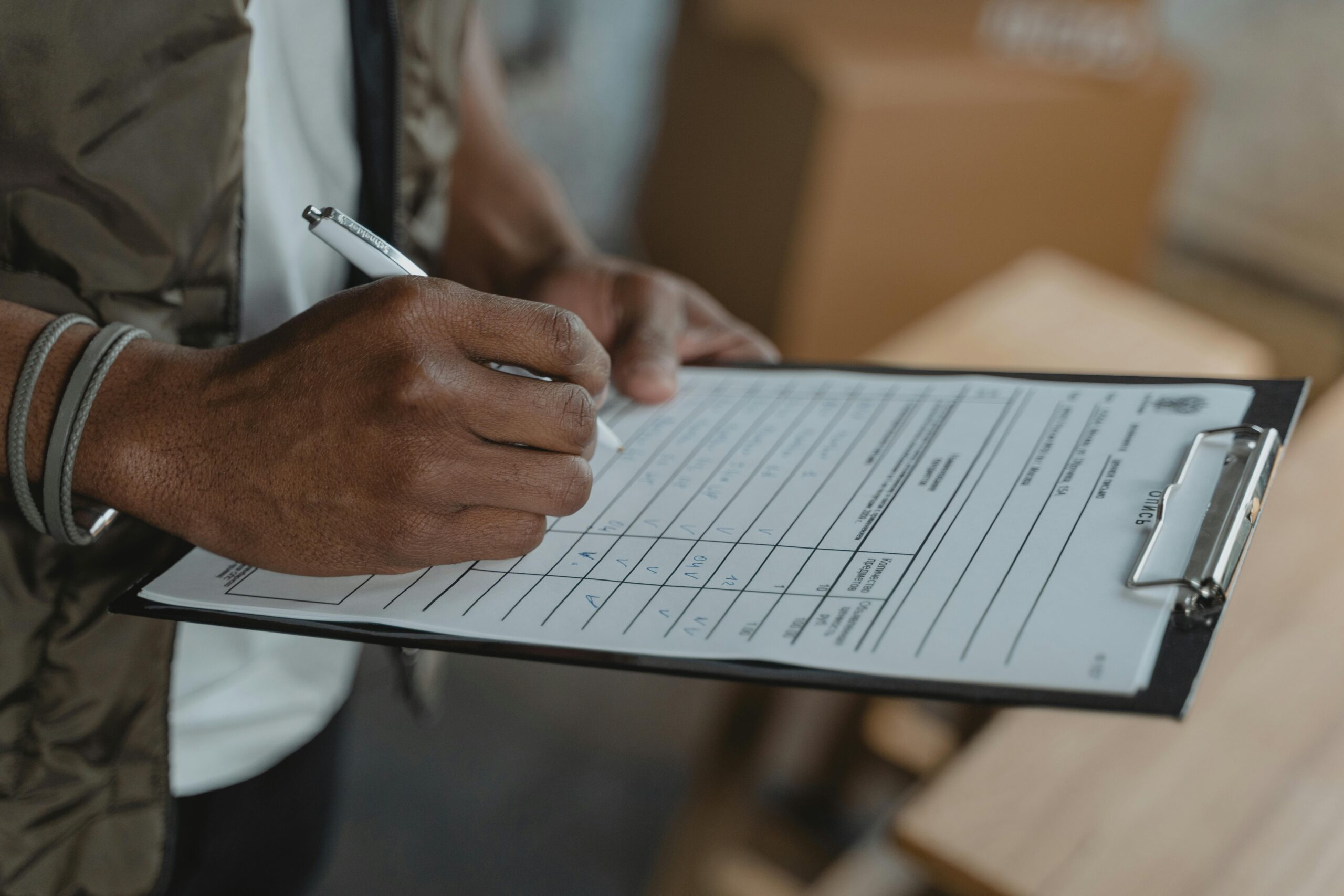Key Points:
- IEP goals for children with autism vary widely but often target communication, social interaction, behavior, and daily living skills.
- Goals must be individualized and measurable, often broken down into short-term objectives.
- ABA therapy complements IEP goals by reinforcing skills across settings like home, school, and therapy sessions.
According to research, approximately 7.5 million students are under Individualized Education Programs (IEPs). IEPs are critical tools in supporting students with autism in school. These tailored plans include specific goals to help students learn academic, social, and life skills.
For parents wondering about IEP goals for autism, it’s important to know that effective goals focus on the unique strengths and challenges of each child. Whether targeting expressive language, classroom participation, or coping with change, IEP goals provide a roadmap for growth across developmental domains.
What are Some IEP Goals for Autism?
IEP goals for autism are designed to support development in communication, social interaction, emotional regulation, behavior, and daily living skills, depending on each child’s unique needs. These goals must be specific, measurable, achievable, relevant, and time-bound (SMART), ensuring they address meaningful challenges while tracking progress over time.
Children with autism often face a variety of difficulties that impact their learning and functioning. That’s why an IEP must break down broader challenges into manageable goals that can be targeted in a structured way, often with the support of specialists like speech therapists, occupational therapists, and behavior analysts.
Why are IEP Goals Important for Children with Autism?
An IEP isn’t just a formality—it’s a legal document that ensures children with disabilities receive support tailored to their unique needs. Autism can affect communication, social engagement, and behavior regulation in different ways, so IEP goals give schools and families a concrete way to measure progress.
These goals also ensure consistency across environments. Teachers, aides, and therapists work together using a shared roadmap. With clearly defined benchmarks, everyone involved knows what success looks like and how to get there.
Moreover, well-structured goals provide children with autism the opportunity to grow in real, observable ways. Progress isn’t just academic—it includes social, behavioral, and emotional skills that shape a child’s overall development.
What Areas Should IEP Goals for Autism Cover?
The scope of IEP goals varies greatly depending on the student’s individual challenges, developmental level, and specific educational needs. Each IEP is tailored to ensure that the goals set are meaningful and achievable based on the student’s unique profile.
While the specific content of IEP goals may differ, most IEPs for students with autism tend to focus on several core domains that are crucial for their success in school and beyond:
1. Communication Goals
Children with autism often have difficulties with both verbal and non-verbal communication. Goals in this area aim to build skills that help them express needs, initiate conversations, and understand others.
Examples of communication goals include:
- Use 3–5-word sentences to request items during structured activities.
- Initiate conversations with peers at least twice daily.
- Use augmentative communication devices to express basic needs in the classroom.
2. Social Skills Goals
Social interaction is a common challenge. These goals help students learn how to engage with peers, respond appropriately, and participate in group settings.
Examples of social skills goals include:
- Take turns during structured play activities with minimal adult support.
- Maintain eye contact during conversations for at least 5 seconds.
- Use appropriate greetings and farewells in 4 out of 5 observed situations.
3. Behavioral Goals
Behavior plans often accompany IEPs for students with autism. Goals in this area aim to reduce problem behaviors and replace them with more appropriate alternatives.
Examples of behavioral goals include:
- Use a break card to request a break before engaging in disruptive behavior.
- Follow one-step instructions during group activities with no more than one prompt.
- Reduce instances of self-stimulatory behavior during instruction by 50% over the IEP period.
4. Academic Skills Goals
Academic goals are essential, but are often adapted for students with autism based on learning styles and support needs.
Examples of academic goals include:
- Complete a three-step math problem with no more than one prompt.
- Identify 10 sight words across 3 settings (e.g., classroom, therapy, home).
- Write a complete sentence with appropriate punctuation in 4 out of 5 trials.
5. Sensory and Emotional Regulation Goals
Sensory issues can overwhelm children with autism. Emotional regulation goals help them learn to manage strong emotions and navigate sensory triggers.
Examples of sensory and emotional regulation goals include:
- Use deep breathing strategies to calm down during transitions, with support.
- Identify personal emotions using visual aids in 80% of observed scenarios.
- Tolerating wearing headphones during loud activities for up to 15 minutes.
6. Daily Living and Functional Skills Goals
These skills help promote independence. They’re often targeted through both school-based tasks and real-world routines.
Examples of functional goals include:
- Independently pack and unpack the backpack at the beginning and end of the school day.
- Follow a visual schedule to complete hygiene routines (e.g., washing hands) with 90% accuracy.
- Use a fork or spoon during mealtime without adult assistance.

How are IEP Goals Measured and Evaluated?
Setting goals is only the first step. Monitoring progress is just as essential. Goals are broken down into short-term objectives, which serve as stepping stones. Data collection happens through direct observation, work samples, and behavior tracking.
Progress is reviewed at regular IEP meetings—typically annually, but more often if needed. Parents and educators can adjust goals based on growth or emerging challenges. Goals that are not progressing should be reviewed for realism, clarity, and support strategy.
Key methods for tracking IEP goals include:
- Frequency recording: Counting how often a behavior occurs.
- Duration tracking: Measuring how long a student engages in a behavior
- Prompt level: Tracking how much support is needed for a task.
- Rubric or checklist: Qualitative scoring for multi-step tasks.
What Makes a Good IEP Goal for a Child with Autism?
Not all goals are created equal. Effective IEP goals for autism are rooted in real, functional needs. They should be clear, data-driven, and tied to observable behaviors. Avoid vague phrases like “improve social skills.” Instead, define what that looks like and how you’ll measure it.
Criteria for effective IEP goals include:
- Specific: Focused on a distinct skill (e.g., greeting peers).
- Measurable: Includes a quantifiable outcome (e.g., 4 out of 5 times).
- Achievable: Challenging but within reach.
- Relevant: Aligned with the child’s developmental and functional needs.
- Time-bound: Includes a clear deadline for achievement.
Also, goals should build on each other. For example, a student may start with learning to ask for help and later move on to problem-solving with peers. These social-emotional milestones are especially important in preventing misunderstandings and peer conflicts—topics we explore further in Autism and Bullying: What Teachers and Parents Should Know.
Can ABA Therapy Help Support IEP Goals?
Absolutely. ABA (Applied Behavior Analysis) therapy can be a powerful complement to a child’s IEP. While IEPs guide school-based instruction, ABA provides targeted interventions in various environments—home, clinic, and community. The strategies used in ABA, such as reinforcement, prompting, and generalization, can help children achieve IEP goals more effectively.
ABA therapists often work closely with school teams. For example, if a child’s IEP includes a goal to reduce tantrums during transitions, the ABA team might practice similar transitions at home or in therapy. This ensures skills transfer across environments, not just within the classroom.
Real-World Examples: Sample IEP Goals for Autism
An Individualized Education Plan (IEP) is a critical tool for children with autism, setting clear, measurable goals tailored to their unique needs. These goals help educators and parents focus on areas where the child requires support, such as communication, behavior, and social skills.
Below are some real-world examples of IEP goals that can guide the development of a personalized plan for children with autism.

Support Your Child’s Growth with ABA Therapy in Maryland
At Steady Steps ABA, we understand how crucial it is to align ABA therapy with school-based goals. If you’re navigating the complexities of some IEP goals for autism, our team can support your child’s development in a way that complements their IEP.
We provide ABA therapy in Maryland, tailored to each child’s strengths, needs, and learning styles. Our team works collaboratively with families and schools to help children generalize skills across environments. Whether it’s enhancing communication, reducing challenging behaviors, or fostering independence, we’re here to help make every step forward a meaningful one.
Get in touch with us to learn how we can support your child’s IEP goals through individualized, compassionate ABA therapy.



